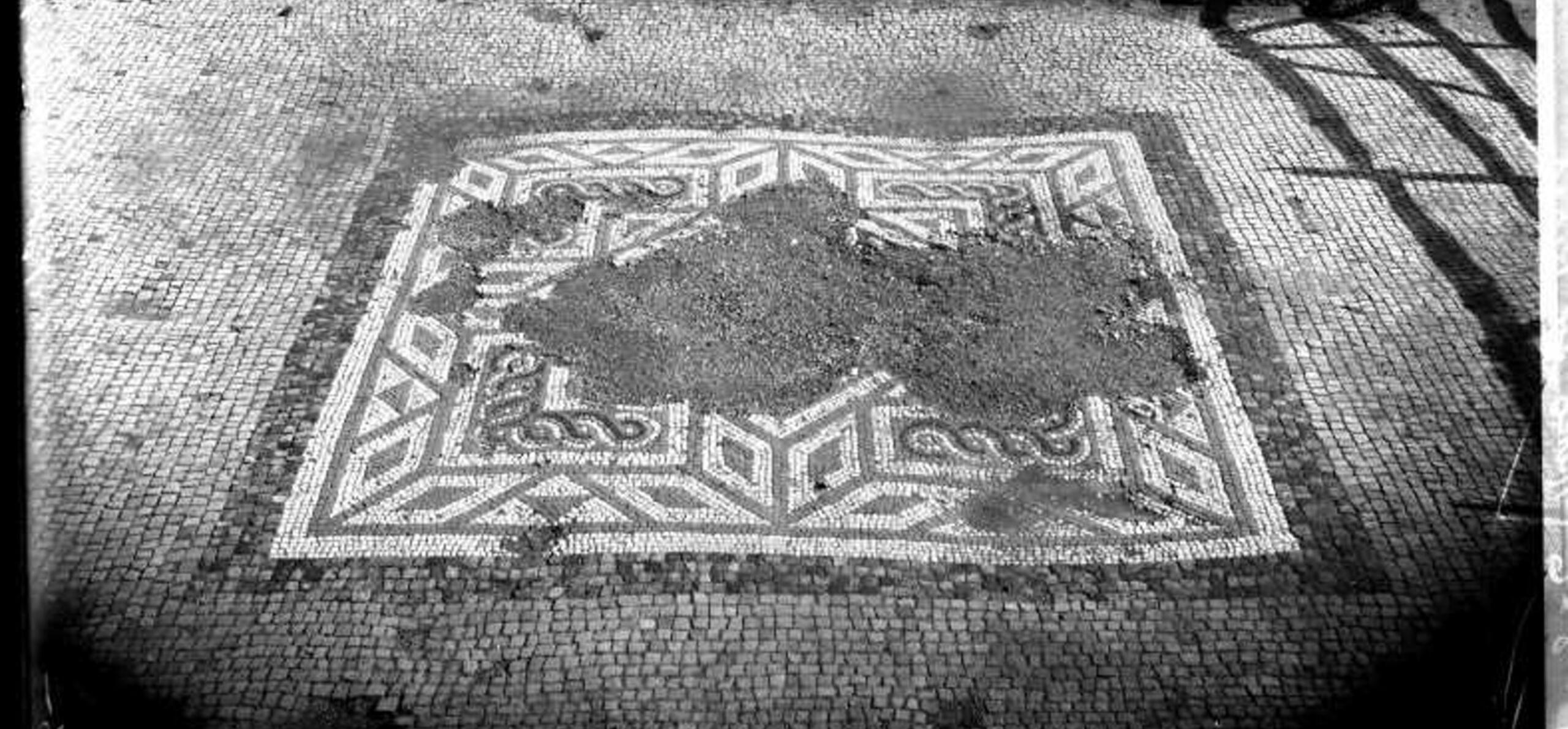Excavations have been carried out at the Roman town of Calleva, near Silchester from earliest times. Between 1890 and 1909 the Society of Antiquaries uncovered the area within the town wall and their plan has formed the foundations for study ever since. Mosaic floors were found in about thirty houses during these excavations of the whole site. Some of these mosaics are now on display in the Museum Atrium and Silchester Gallery.
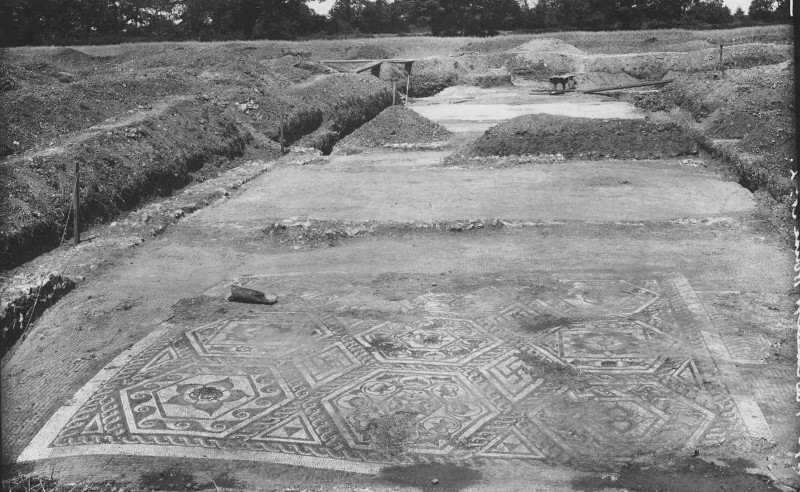
'Hexagon' mosaic photographed after excavation by the Society of Antiquaries
Mosaic floors are luxury items and would have been used by townspeople to display their wealth and adoption of Roman ways. Mosaics are made from cubes of stone, brick, tile or pottery known as tesserae. The mosaic design was probably chosen from a pattern book containing designs and a range of individual motifs. Mosaics are laid on a solid foundation with guidelines scored or painted into the top layer. The tesserae were then laid in a thin bed of mortar spread over the guide lines a little at a time.

Iron mosaic worker's hammer (REDMG : 1995.3.104)
Two of the large almost complete mosaics in the Atrium came from the same house (house 1) in insula XIV which was excavated by the Society of Antiquaries in 1895. The house is thought to have been built in the mid-second century AD. The size of the mosaic shows how large the rooms were.
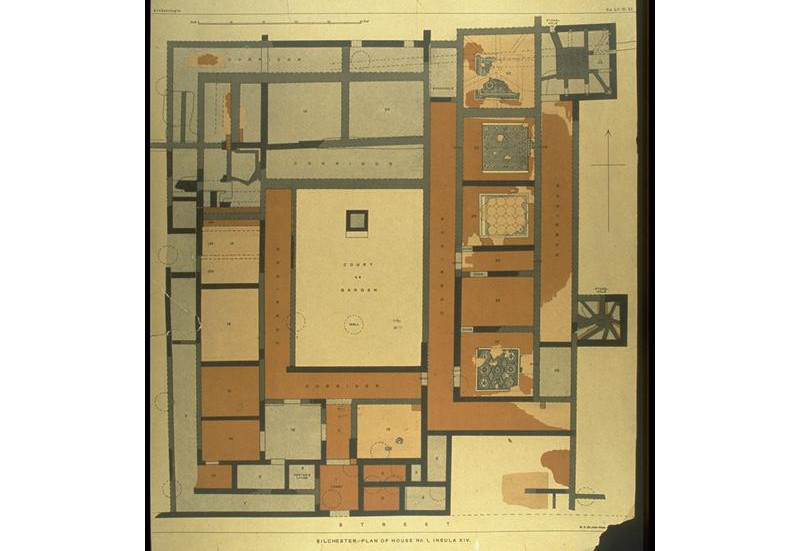
Illustration by George Fox of house 1 in insula XIV, showing rooms with mosaic floors
The mosaic floors tell us about Roman life. The places where the floor is worn can reveal how people used the rooms, where people walked and which areas were protected by furniture. The 'black and white' mosaic has been carefully repaired in Roman times and at a later time with larger oblong tiles.
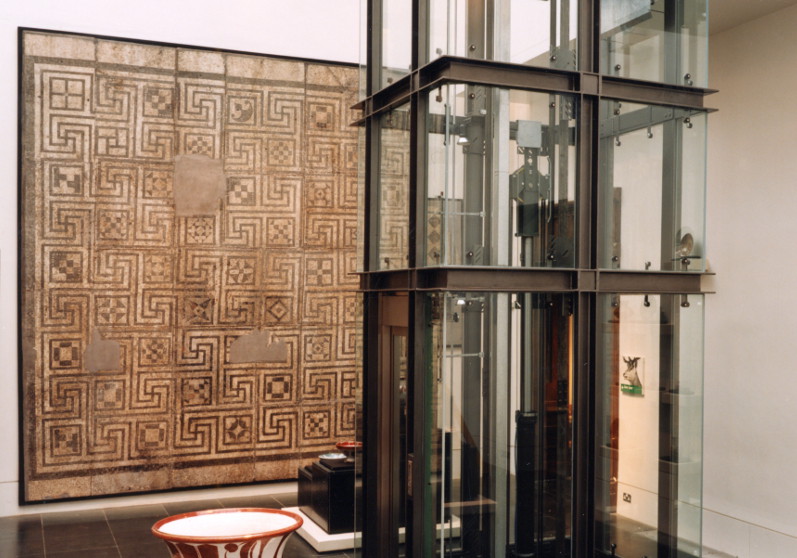
Black and white mosaic in Atrium (REDMG : 1995.85.2)
We do not have records for how the Society of Antiquaries removed the mosaics but we can see they were removed in sections. The mosaics were originally mounted on very heavy steel reinforced concrete, for display in the Museum soon after discovery in 1895. In 1999 the 'hexagon' mosaic was cleaned and restored as part of the major refurbishment of the Museum and Town Hall.
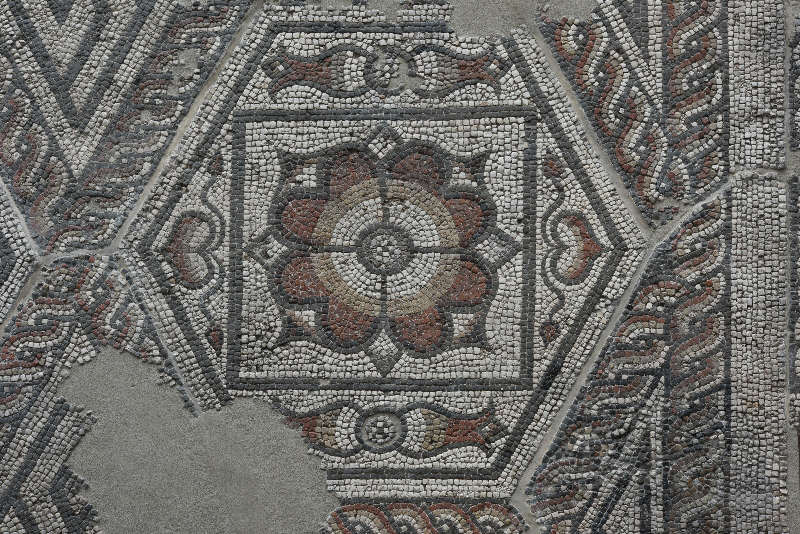
Detail of 'hexagon' mosaic (REDMG : 1995.85.1)
The 'church' mosaic was discovered in 1892 but not removed until 1961. This building was near the Forum and Basilica in the centre of the town and because of its shape some early archaeologists interpreted it as a Christian church.
This mosaic was lifted in one piece. Strips of open weave material were stuck to the upper surface of the mosaic which was then undercut as it was lifted and rolled over metal drums and laid face down onto a prepared frame.

Excavations led by Sir Ian Richmond in 1961
Most of the mosaics found at Calleva have geometric patterns but one fragment on the Museum stairway depicts a figure. The 'Seasons' mosaic shows a figure in the centre. It was probably part of a larger design with four figures representing the four seasons.
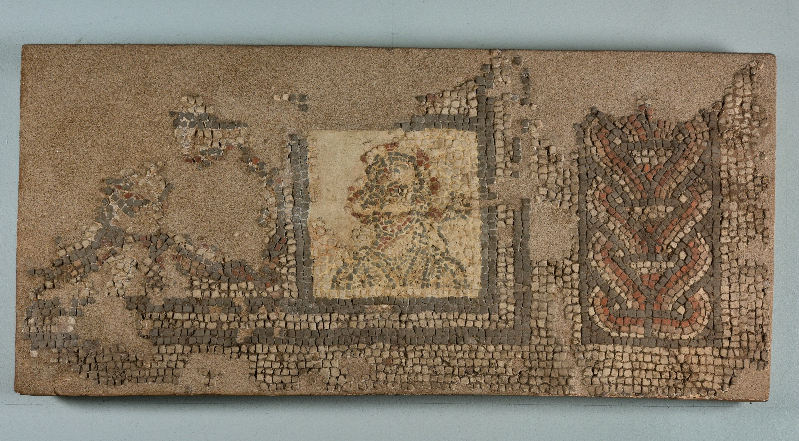
'Seasons' mosaic displayed on stairs at Reading Museum (REDMG : 1995.85.27)
Impressive Roman mosaics are still being revealed around the country. Excavations by the Boxford History Project at a Roman villa in Boxford recently revealed an elaborate mosaic floor.
